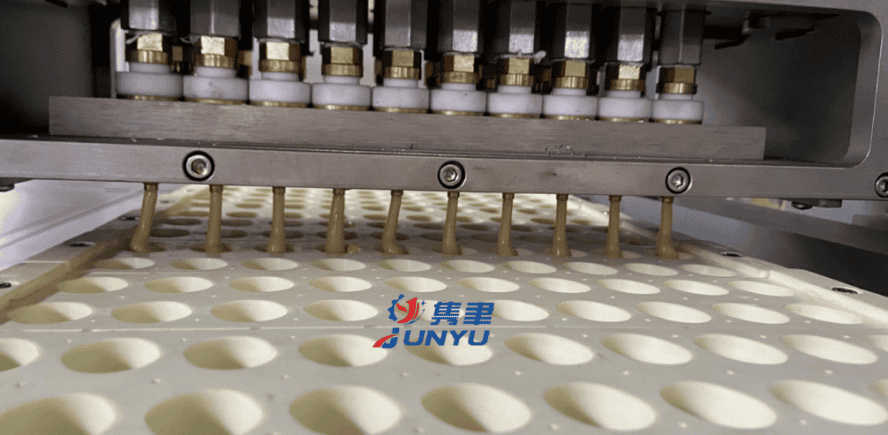A factory produces cookies in several different ways. The main components of a cookie are flour, sugar, fat, water, and chemical leavening. The manufacturing processes and formula compositions of cookies vary. These main ingredients combine to create the perfect cookie. In fact, a typical cookie contains just four basic components: flour, fat, water, and sugar. The final ingredients include a variety of other ingredients, such as coloring agents and flavorings.
Process for making cookies in factories
The process for making cookies in factories involves several steps. Firstly, the dough is rolled out. Then, it is molded using a rotary or stamping machine. Stamping machines use pre-rolled dough, while dough molding machines (FPL) extrude the dough through a template with different shapes. After the dough is rolled out, the pieces of dough are placed on heated stencils or oven mesh conveyor belts. The finished cookies are then packed in boxes or packs.
In flow-mechanized lines, raw materials are fed into kneading machines. The dough is prepared from flour and starch, as well as by preparing emulsions from the rest of the raw materials. Emulsion preparation involves mixing two liquids with different intermolecular cohesive forces. This ensures that the two raw materials have equal distribution and can be processed easily. After the dough is mixed, it goes through quality inspection and packaging.
The next step in the manufacturing process is a process known as mixing. In this step, the dough is mixed at different speeds to make different types and sizes of cookies. Depending on the flour used, it can take anywhere from ten to fifteen minutes to mix the dough. After it’s mixed, workers place it into boxes and wrap the cookies. Once they’re done, the cookies are sent to the packaging and distribution machines.
Ingredients in cookies
Cookie recipes contain three basic ingredients: flour, sugar, and fat. Other ingredients include leaveners, eggs, liquids, nuts, and chocolate. Fresh ingredients are essential to the success of a cookie. When selecting a cookie recipe, look for the label to see if it mentions “additional ingredients.”
Sugar is used to make cookies soft and chewy. The butter in cookies acts as a lubricant and as aerating agent. It traps air cells during mixing and acts as a nucleus for chemical leaveners. This step is critical for volume and texture. Sweeteners are a key component in cookie dough, and they range from 17 to 30 percent on a solid basis. The types of sweeteners used vary depending on the recipe.
Other fats affect the taste and texture of the cookie. Butter makes a flattened cookie that spreads when placed on a hot baking sheet. Shortening does not spread as easily and adds no flavor. Shortening has a higher melting point, so it creates a puffier cookie. Shortening is also less expensive than butter, but you have to be careful because it is not as flavorful.
Cost of making cookies in factories
A factory makes cookies for a living. There are two main ways to calculate the cost of a cookie: by estimating the cost per cookie, or by dividing the ingredients’ costs by the number of cookies being baked. The latter is the cheapest option, as it can save time and money. But there are certain other factors that must be taken into consideration when calculating the cost per cookie. For instance, the equipment used for making the cookies also needs to be estimated.
While factory-made cookies are usually made with better ingredients, they can be expensive. For instance, a single cookie might cost $14. But if you sell them for seven cents each, you could expect to make at least $50 profit per dozen. A factory worker can earn up to $15 an hour. However, many people can’t afford to hire an employee to work for such a low pay. And if you do not have a factory, you can always go for an out-of-the-way location.
Cookie manufacturing requires precise manufacturing, from mixing the dough to baking and packaging. In case of errors, you could end up losing money. However, with quality and reliable machinery, you can prevent losses and reap the maximum profits from the investment. So, when thinking of starting a factory, keep in mind the following factors:





